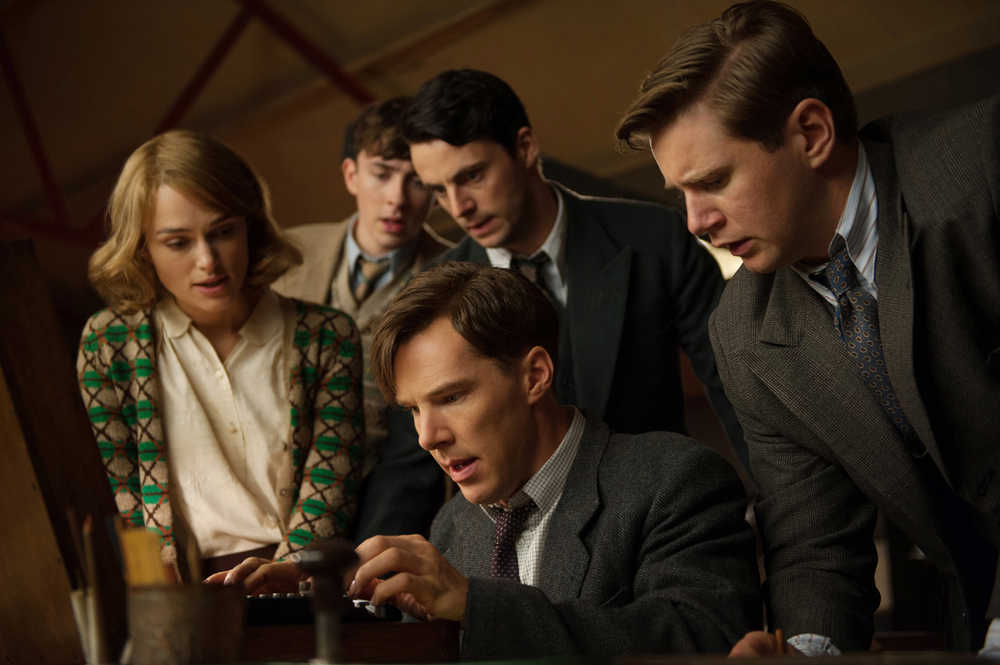‘The Imitation Game”
The Weinstein Company
1 hour, 54 minutes
Benedict Cumberbatch is an interesting specimen of actor. I feel like he’s just come about all of a sudden. A couple of years ago I’d never heard of him, and then, bam! out of nowhere the guy is starring in everything. This must be how my parent’s generation felt about Matthew McConaughey 25 years ago.
Like McConaughey, Cumberbatch appears to be worthy of all the attention. As the star of the BBC’s “Sherlock,” the actor has made a name for himself as the go to guy for creepily aloof geniuses, and this week’s WWII-era drama, “The Imitation Game” will do nothing to change that impression.
Cumberbatch stars as Alan Turing, a brilliant, yet socially inept mathematician who, by employing his aptitude for complicated puzzles, helped the Allies win World War II, and with the invention of the computer, forever altered the destiny of mankind. Following his life in a somewhat rambling manner, the film focuses most of its time between 1939 and 1945, when Turing and his team were working feverishly to come up with a way to break the Nazi’s infamous Enigma code.
At the start of the project, Turing, blindingly intelligent but just as blind to the feelings of his fellows, is ostracized as an outsider. The rest of the team is attacking the problem head on — looking for some kind of key that will allow them to decode the German messages they intercept over the radio waves every hour of every day.
Turing thinks differently, however. To his way of thinking, Enigma, created by a machine, is too difficult for the human mind to be able to decrypt. But a machine might be able to approach it differently, by trying thousands of permutations at once. According to Turing, only a machine can stop another machine. This is a minority position, but once the scientist is able to get Churchill on his side, everyone is working on Turing’s machine.
Complicating matters somewhat, and providing a framework for the larger story, is the fact that Turing is gay — gay in a time and place, mid-20th Century Britain, where such an orientation is expressly illegal. Turing is eventually arrested for indecency, chemically castrated, which has the side effect of making concentration difficult, and eventually commits suicide.
Though you couldn’t say “Imitation Game” is an advocacy movie, it’s pretty clear based on Cumberbatch’s tormented performance where the film’s politics lie. It’s a great shame that one of the greatest minds of the age and a man who, despite his difficult personality, did as much to end the war and move mankind into the future as anyone, was treated so terribly by his own country. It’s an excellent example of how small-mindedness and short-sighted policies can terribly destructive.
Not a film to rest on only one or two issues, “The Imitation Game” also takes on the issue of the role of women in leadership positions in the math and science fields. Keira Knightly plays Joan Clarke, a real-life woman who was a brilliant mathematician in her own right and helped in the creation of Turing’s codebreaking machine.
Clarke and Turning were great friends, perhaps borne out of a sense that both were outcast due to circumstances beyond their control. The two were even briefly engaged, and Knightly, though not given a great deal to do, holds her own in the boys club.
I liked “The Imitation Game” quite a bit, though more for what it aspires to be than what it ultimately is. The performances are excellent, Cumberbatch quite rightly receiving an Oscar nomination for playing Turing.
The script, however, is the weak link in the production. Though the writing is more than adequate at times, there are definite clunker moments. Often narrative connections are not made, or in at least one case, the plot is advanced only by allowing us to believe that Clarke is suddenly not the brilliant scientist they’ve been claiming she is, but instead an emotional, easily manipulated little girl.
The film also loses points by pulling that tired old biopic trick of repeating the same line several times throughout, almost as if flashing a neon sign saying “Theme of the Movie!” “Sometimes it’s the people no one imagines anything of who do the things no one can imagine.” OK, we got it. Move on.
I am fascinated by Turing’s story, and Cumberbatch, among others including Matthew Goode, does a stellar job in the role. I just wish the film had not been quite so by the numbers. That a screenwriter or director with some style, like maybe the Coen Brothers, had made the film instead.
As it is, “The Imitation Game” is intriguing and compelling, but only hints at a greater movie that could have been.
Grade: B+
“The Imitation Game” is rated PG-13 for sexual references and mature thematic material.
Chris Jenness is a freelance graphic designer, artist and movie buff who lives in Nikiski.

